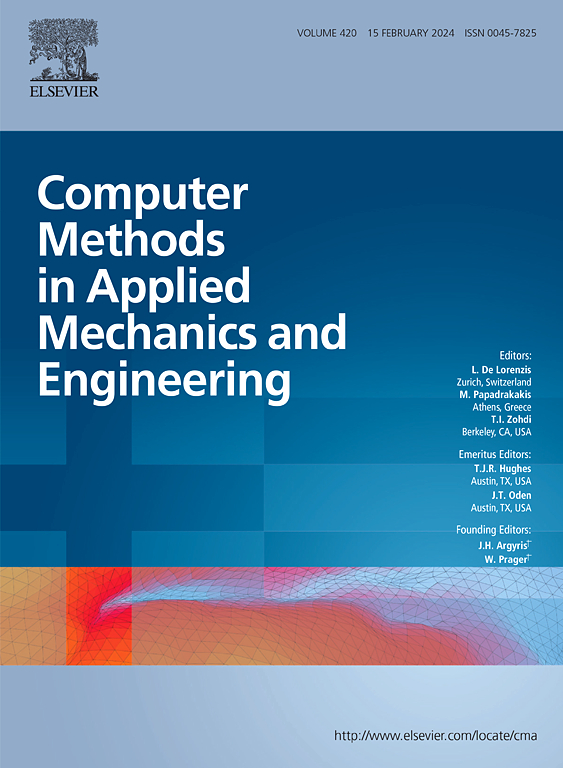Boundary settings for seismic dynamic analysis of rock masses using the nodal-based continuous-discontinuous deformation analysis method
IF 6.9
1区 工程技术
Q1 ENGINEERING, MULTIDISCIPLINARY
Computer Methods in Applied Mechanics and Engineering
Pub Date : 2025-03-22
DOI:10.1016/j.cma.2025.117941
引用次数: 0
Abstract
The nodal-based continuous-discontinuous deformation analysis method (NCDDAM) proposed by the authors has demonstrated its potential for dynamic analysis of rock masses with discontinuities. However, the existing boundary conditions applied in NCDDAM are not suitable for seismic dynamic analysis, as they can cause fictitious reflected waves. To further apply the NCDDAM for seismic dynamic analysis, this paper introduces five boundary conditions: viscous boundary, viscoelasticity boundary, seismic input boundary, free field boundary, and static-dynamic unified boundary. Several numerical examples are conduced to validate the enriched NCDDAM. The numerical results demonstrate the capacity of the enriched NCDDAM for seismic dynamic analysis of rock masses. The nonreflecting boundaries applied in NCDDAM can effectively absorb wave energy and avoid fictitious scattered waves, while the free field boundary applied in NCDDAM effectively simulates wave propagation in a semi-infinite domain. Based on the static-dynamic unified boundary, the seamless transition of boundary condition settings between the quasi-static and dynamic stages can be achieved. The entire evolution process of earthquake-induced disasters, including initiation, movement, run-out, and deposition can be effectively simulated within a unified framework using the enriched NCDDAM.
求助全文
约1分钟内获得全文
求助全文
来源期刊
CiteScore
12.70
自引率
15.30%
发文量
719
审稿时长
44 days
期刊介绍:
Computer Methods in Applied Mechanics and Engineering stands as a cornerstone in the realm of computational science and engineering. With a history spanning over five decades, the journal has been a key platform for disseminating papers on advanced mathematical modeling and numerical solutions. Interdisciplinary in nature, these contributions encompass mechanics, mathematics, computer science, and various scientific disciplines. The journal welcomes a broad range of computational methods addressing the simulation, analysis, and design of complex physical problems, making it a vital resource for researchers in the field.

 求助内容:
求助内容: 应助结果提醒方式:
应助结果提醒方式:


